Less than a mile away from the mysterious Googleplex is another radiant treasure of Silicon Valley: The Computer History Museum. And since the two Austrians and I still had plenty of time left in the day, we took that opportunity to explore the museum after we had explored Google.
What we didn’t know at the time was that the Computer History Museum contains the largest and most significant collection of computing artifacts on the planet, including an Apple-1, the first Google production servers, a Cray-1 supercomputer, and a lot of other great artifacts of the early computer age and beyond.
With over 90,000 objects, photographs, and films (and hundreds of gigabytes of software), in its category this museum has no equal. So, needless to say, we were in for a real treat, and in this review I’m going to reveal the 7 most memorable artifacts I stumbled across that day, including the “Godfather” of the iPhone and a 150 lb. computer that you just HAVE to get your loved one this holiday season.
But we’ll get to that.
1. The Charles Babbage Difference Engine (#2)
When you first walk into the Computer History Museum, the Babbage Difference Engine will probably be the first thing you see. This incredible machine (designed by Charles Babbage, the first computer pioneer) is a highly precise mechanical calculating engine, able to solve mathematical expressions without the use of any electronic components. (There are a LOT of gears.) As if that weren’t enough, it automatically prints an inked hard copy as a record. And all of this was designed decades before anyone had created an electrical computer.
First designed in 1849, this incredible machine consists of over 8,000 parts. The fact that this 11 foot long behemoth even exists is incredible, and only two were ever built (hence #2 in the name). If you want to see it in action, the museum even offers scheduled demonstrations! And even though Babbage never built this machine and died unacknowledged in his time, his machine now stands as a memorial to his work.
2. The Legendary Apple-1
After passing the front desk, I turned the corner and saw shelves upon shelves of early computers. And then, at the far end of the room, I saw this unassuming computer behind glass. Even though this unit bares no label, this is an Apple-1. First conceived in Steve Job’s garage in 1976 and designed by Steve Wozniak, the Apple-1 was the first computer ever sold by Apple Computer. (Jobs and Wozniak went into small-scale production when The Byte Shop ordered 50 assembled boards.)
I wondered if this Apple-1 that was now behind glass might have been one of those original 50 that were ordered. Probably not, but it was amazing to think that something that now looks so simple to us was part of a major revolution.
3. The First Google Production Server
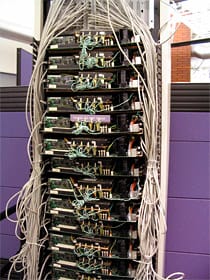 Nearby, I stumbled across an interesting tower of a computer. A sign below explained that this was Google’s first production server, one of many, many servers designed to process the thousands upon thousands of search requests per second from Google users.
Nearby, I stumbled across an interesting tower of a computer. A sign below explained that this was Google’s first production server, one of many, many servers designed to process the thousands upon thousands of search requests per second from Google users.
Of course! Only a server would have this many ethernet cables pouring out of it.
Apparently, the first Google data center had about thirty of these monsters; and even though they were difficult to repair, they provided Google with its first large-scale computing system which allowed the company to grow quickly at minimal cost.
Today, Google utilizes over a million servers! (And they’re much, much faster than this early example.)
4. The Cray-3 “Brick”
Speaking of fast computers and cabled monsters, this quirky little box was probably the best example of tons of power packed into a tiny package in the entire museum. Designed in 1993, the Cray-3 “Brick” contains multi-layered circuit boards submerged in fluorinert. This little guy is so fast that a computation that took Cray-3 only 1 second would have taken the 1947 ENIAC sixty-seven years to perform! Behold, the power of 15 gigaflops. (And that’s fast, especially considering a gigaflop is a billion floating-point math operations per second.)
5. The Omnibot 2000 “toy” robot
 In my exploration of the museum, I also came across some computers that tried to be more human-like in appearance and in behavior. Although they usually didn’t do either of these things very well, their attempts were often amusing and charming. The Omnibot 2000 is a perfect example of this.
In my exploration of the museum, I also came across some computers that tried to be more human-like in appearance and in behavior. Although they usually didn’t do either of these things very well, their attempts were often amusing and charming. The Omnibot 2000 is a perfect example of this.
Hailing from 1985, this little guy spoke, moved, and carried objects. You could give it commands by remote control or feed it programs on magnetic tape. There were even plans to sell optional accessories like light & sound sensors and even vacuum cleaner attachments! But in this case, I think the Tomy Kyogo company got ahead of itself there, considering that it never made any of these accessories.
Still, it’s pretty cute, isn’t it? Droid-esque, even.
6. The Apple Newton
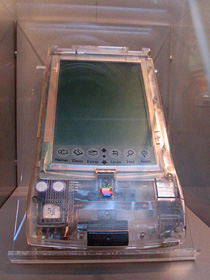 Some of you may not have even heard of this relic of Apple history gone by, but in the early 1990s useful handheld computers were just starting to appear in the marketplace. By 1993, Apple introduced the Newton which is, in some ways, the godfather of the iPhone.
Some of you may not have even heard of this relic of Apple history gone by, but in the early 1990s useful handheld computers were just starting to appear in the marketplace. By 1993, Apple introduced the Newton which is, in some ways, the godfather of the iPhone.
Along with most other early attempts at handhelds, the Newton sold poorly. In fact, handhelds only achieved some success later when they focused on doing a narrower range of tasks better than their PC counterparts.
I find it somewhat ironic that the situation has now reversed. Handhelds (like the iPhone) have now gotten so powerful that, far from being an accessory, some people now use them as their primary computers.
7. The Utter Joke that was The “Kitchen” Computer
Out of everything in the museum, this one is probably the funniest and least realistic vision for the future computing. Witness the Kitchen Computer featured in the 1969 Neiman Marcus catalog as a computer that allowed housewives to store and retrieve recipes. Above is a picture of that this unlikely event. Did I mention that the interface only included binary lights and switches? Or that it cost over $10,000?
Just imagine: it’s Christmas morning, and your wife spends five minutes unwrapping this shiny behemoth of a computer.
“It’s red!” she exclaims. “My favorite color!”
And you reply: “Even though its 150 pounds and no one outside of a computer science department could ever hope to figure out how to store recipes on it, that’s okay, honey! It’s a symbol of our love!”
Clockspeed? 0.6 megahertz.
Thankfully, there’s no evidence that any Kitchen Computers were ever sold.
Verdict
Simply put, the Computer History Museum is my favorite museum in Silicon Valley. Actually, it’s my favorite museum in all of California because no other place comes close to having so much of computer history literally at your fingertips. In addition to being family-friendly, it’s probably the best place in the world to learn how the human race went from the abacus all the way to supercomputers, and seeing that history firsthand is a blast! Oh, and when you go, ask about the free tours that are given periodically. I happened to stumble into a tour during my visit, and I really enjoyed it. (These people really know their stuff and are happy to answer questions.)
Obviously there was a lot I wasn’t able to include in this article, including the haunting red & black Cray-2 supercomputer, the famous PDP-8, the Behemoth Recumbent Bicycle, and much more. To check those (and all the photos) out in high resolution, be sure to swing by the photo gallery that accompanies this article. And when you see the photos, keep in mind that the museum has been renovated since I visited it in 2009, so it’s even more stylish and futuristic now than when I visited.
— Bonus —
Just like with every travel photo I’ve released since December 2010, Marco the Spacefarer followed me that day and therefore appears in all 32 photos in the photo gallery that accompanies this article. Can you find him in all 32?
The “Where’s Marco” game is like Where’s Waldo or “I Spy”, but more challenging. If you’re new to “Where’s Marco”, learn how to play →
And remember to:
Explore the Computer History Museum photo gallery →
Next: A Breathtaking View of San Francisco
This article concludes our exploration of Silicon Valley, at least for the foreseeable future. Next, I moved onto San Francisco itself, and in the next article we’ll explore Coit Tower, the breathtaking view of San Francisco from the top, and the best souvenir a traveller could ask for:
All photos from this event are in the Computer History Museum gallery. All photos in the Gallery can be used as desktop wallpapers because they are high resolution (1920×1440).

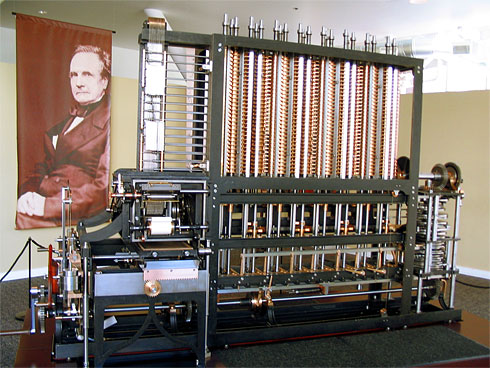
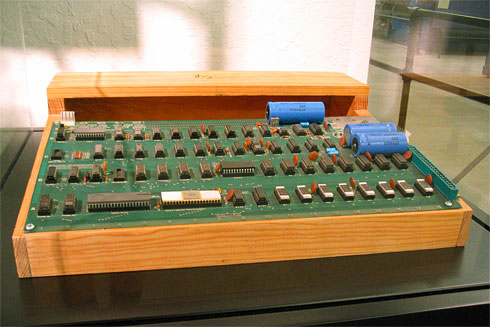

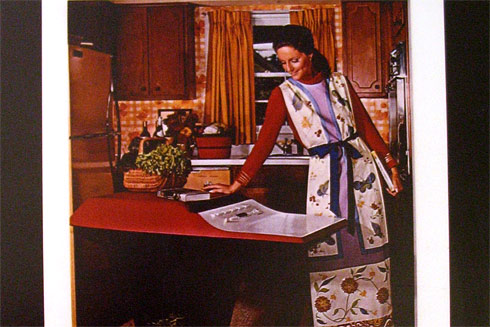
The Computer museum is a very interesting place to visit. Thanks for the review and the tips about the things that we could see and discover. Hope to go there with the kids!
Charles Babbage made our life easy by inventing computers. This museum shows us the evolution of computers. It’s nice to see this kind of stuff. The Cray-3 looks like braided human hair.
Great post! I would love to visit this museum as well! I loved reading every word you’ve written in this article!
Love the kitchen computer! That’s hilarious!
It’s amazing how fast technology develops. for less than a generation we’ve reached amazing technical achievements!
I love reading your article, it is very educational. It’s amazing to see how computers evolved. Thanks for sharing this information.
@Tony
Totally. It’s a great way for kids to have a visceral experience with the history of tech.
@Lola, Edmond, Ritta, Jasper
Glad you guys enjoyed the article!
@Greg
And can you believe it was marketed? They actually spent money to sell it.
Great post! I like reading your blog. I would love to visit this museum as well! It’s amazing to see how computers evolved. Thanks for sharing!
I’m glad I found your article. The information is smart and interesting. This is a must-read for everyone. I really appreciate your hard work.